The Elements of Art!
Okay, I know it needs no introduction. We all know the elements of art but I include it in my planning to keep me on track.

The Elements of Art include:
Form
Line
Shape
Color
Space
Texture
Value
You may have determined that my biggest criteria for a fabulous lesson is kid appeal. I often bypass standard-based art lessons simply because they look or seem too boring. You won't see me teaching a lesson based on The Elements of Art (although I admit, I did once) but I do make a very conscience effort to thread it throughout my units.
There are some elements that I use for every lesson: Line, Shape, Color, Space but I require a little push to include Form, Texture and Value. My SPARKLE method reminds me to include these elements.
The hardest element to inject into my curriculum is form. I'm not partial to working with papier-mache, toilet paper rolls and Kleenex boxes, but I know I must. Building something--anything--is essential to the artistic process. I'm just not that great at it. I worry about things. Like where to store all these creations before and after the project is done and whether or not I have enough table space for boxy build-it's.
Case in point: I once did a lesson based upon a city-scape project in Nellie Shepherd's "My Picture Art Class" book. Oh my goodness! The final results looked so enticing. What fun my little kinders would have building skyscrapers and pasting windows and stars and glitter over gesso-covered boxes. So I started collecting boxes: toothpaste, cereal, frozen dinners, Kraft macaroni and cheese, tissue boxes. I had a huge box in the teachers lounge to throw recycled boxes into. Everyone got into it! Then I started to do the math. I had about 50 kinders. I'd need at least 3 boxes per project. 4 would be better. That's mucho boxes.
But I forged ahead. I cut stacks of tag board into rectangles, set out my huge collection of boxes, filled tubs with gesso and went to town.
Oh gosh. Was it fun!
Now I had 50 wet city-scapes to store and I had very little storage.
You can see where this is going. The project was fun, but it was a pain in the neck.
Oh, I know. There are many ways to make this project work, but I decided that this project--as cute as it was--was meant for a one-on-one interaction between parent and child or a small group.
Form is important. But it has to be realistic for your classroom. Every form-based project I want to do (think I can do) undergoes serious consideration. I usually stick with ceramics--tidy, compact, accessible...but I need to branch out.
Here's an exercise: Look at your collection of art lessons. Randomly grab 20. Out of that 20, determine how many lessons include good examples of each one of the elements of art. If you fall short in one, two or three areas, then you know what your teaching weakness is. Like I said, form, texture and value is mine. Determine yours and develop a few lessons to fill in your holes.
Have fun!

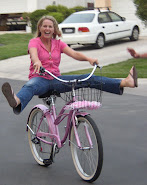






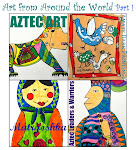
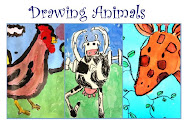
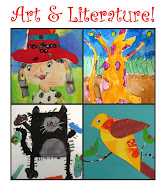

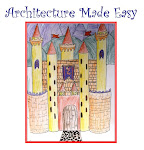
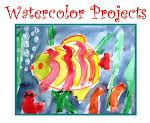





8 comments:
Patty, I give you credit for admitting your weakness. But keep checking back with my blog, because later this year I'll post a GREAT cardboard sculpture project I do with 1st graders that doesn't take up too much room and doesn't have the mess of gesso-ed cities!!! And then there's the plaster bandage finger puppets that was one of my early posts. The advantage of plaster bandage is that it dries quickly (doesn't have the drip factor of papier-mache!)so is easy to store. The finger puppets are small and were easily stored on a couple of old lunch trays or cookie sheets per class, and often fit right into a shelf of my drying rack.
I also have some great relief projects I've done that don't have the storage problems of more fully 3-D stuff, since they can be slid onto drying rack shelves as well. I'll post them sometime soon, even though I'm not doing them right now. Maybe even today! :-).
Value can be taught by just reminding the kids of the way we press lightly to color lighter colors and press harder to make darker colors. Also, anytime I can toss in shadows that helps them understand value as well.
Can't wait to see these projects, Phyl!
I have trouble with form and value. I do toilet paper roll Kachina Dolls and totem poles in November for Native American Heritage month. Around Halloween we make skeletons out of dried pasta shapes. Those are fun for form and texture. Value is probably my biggest bug-a-boo.
Not to be rude, but I work with a Native American teacher and have been told that toliet paper roll Kachinas are considered offensive to their culture. Check this out....
http://brownvboard.org/brwnqurt/04-3/04-3e.htm
Interesting article. Good to know although it's hard to imagine why a paper roll made into a craft would be considered offensive. Thanks for linking!
Hi! Our entire curriculum is based upon the Elements and Principles of Design. I base my lessons around them, but teach them THROUGH an artist or culture so it does not get boring and has that "hook" for the kids. It works well- I've got my entire curriculum posted on my blog.
www.theartofeducation.wordpress.com
-Jessica
I have heard that about toilet paper roll kachinas as well. I used to make them until I heard that it might be offensive. I hadn't made the connection until then. A toilet connection to religous icons of any sort could be touchy. There are other ways you could do the craft though, so a great lesson could still be done with other materials.
Post a Comment